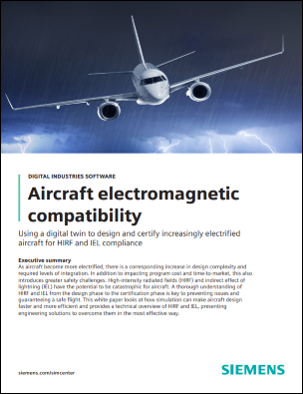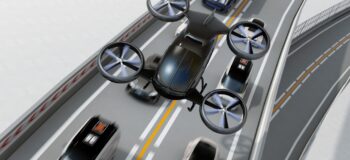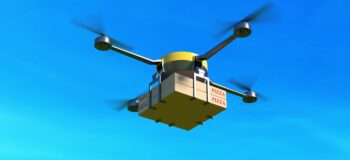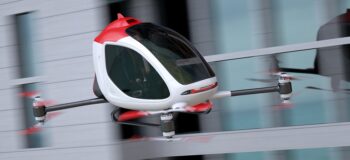Aircraft HIRF and IEL qualification with digital twins
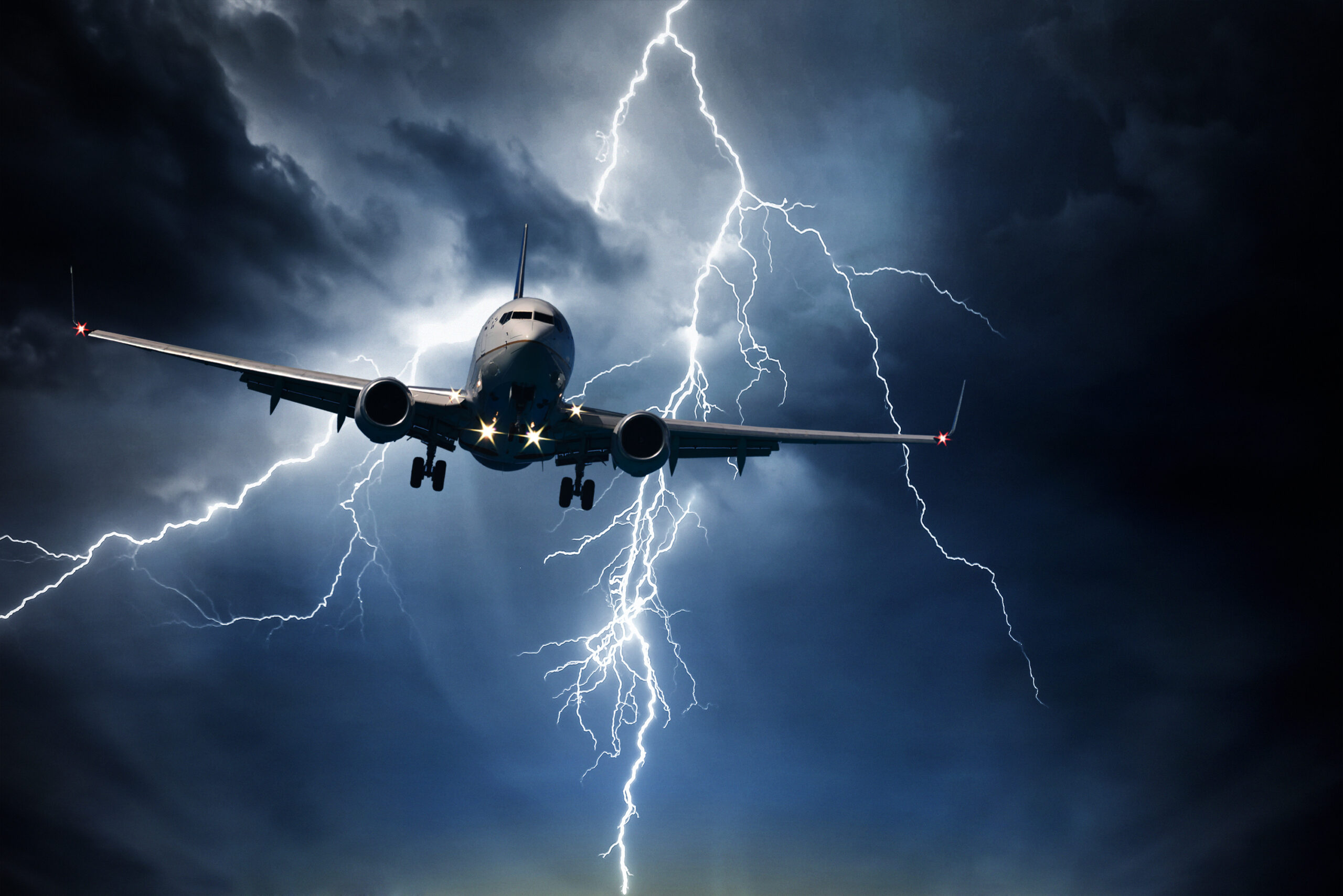
The challenges of electromagnetic compatibility (EMC)
In 1963, a Pan American Boeing 707 crashed due to a lightning strike, causing the death of 81 occupants.1
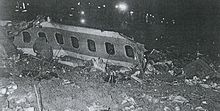
Today, the risk of this kind of incident takes a bigger place in the design process as aeronautical platforms are operating in an increasingly complex and more severe electromagnetic environment. There are more external and internal radiating sources than ever before, including higher power levels of wanted and unwanted emissions, extensive use of materials with reduced shielding effectiveness and electronic devices replacing mechanical and hydraulic flight controls. These electrical and electronic devices that perform safety-critical functions may be damaged by a lightning strike (indirect effect of lightning – IEL) or radiation (high-intensity radiated fields – HIRF) as well as by general electromagnetic compatibility (EMC) issues.
As an engineer, you need to understand the critical components as early as possible in the design cycle. These are classified as emitters (devices that emit electromagnetic noise through conduction or radiation), transfer paths (structures such as the electrical wire harness or fuselage that transmit electromagnetic noise throughout the entire system) or receptors (avionics systems, radar systems or sensors that are susceptible to electromagnetic interference).
Indeed, the earlier you identify potential problems in the design phase, the sooner you can make better decisions to enable your aircraft to meet regulations and ensure passenger safety.
Using a numerical modeling approach and high-fidelity digital twins is one way to reduce expensive and time-consuming testing activities and allow aircraft hardening with respect to IEL and HIRF at the design phase.
Lightning effects
When a lightning flash strikes your aircraft, the conduction of the electrical currents through the aircraft can have both direct and indirect effects.
Direct effects of lightning (DEL)
Direct effects of lightning (DEL) refer to the physical damage to materials caused by thermal effects, spark and magnetic forces, such as:
- Arcing between joints in poorly bonded structural components;
- Bending and deformation of metallic components;
- Melting or vaporization of cables and external expanded foil protective meshes;
- Puncture of carbon ply skin and radomes;
- Arcing and formation of hot spots within fuel tanks of fuel vapor zones
Here’s an example of how DEL could affect your aircraft:


Indirect effects of lightning (IEL)
On the other hand, indirect effects of lightning (IEL) refer to electromagnetic interference to electrical and electronic equipment, with particular interest to those belonging to subsystems or systems which perform safety-critical functions.
At the subsystem level, electric machines and power electronics drives are expected to have ultra-high-power densities, which requires significant innovations in material, devices, machine structure, and thermal management. The high-power electrical propulsion systems are causing electromagnetic disturbances, resulting in a significant increase in electromagnetic compatibility (EMC) related issues. You will need to understand and mitigate these issues in order to guarantee a safe flight.




High-intensity radiated fields (HIRF)
HIRF immunity is the ability of the aircraft systems and equipment to correctly perform their functions within any possible electromagnetic environment generated from external radio frequency (RF) energy sources (e.g., radar emitters).
External electromagnetic RF fields can penetrate the aircraft structure through specific points of entry (apertures, gaskets, materials with low shielding effectiveness, etc.) and may couple to cable harnesses or directly interfere with equipment.

HIRF certification is designed to demonstrate that equipment and systems performing safety-critical functions can withstand the internal electromagnetic environment induced by a given external electromagnetic environment. Certification authorities have recognized numerical analysis as an option to support IEL and HIRF compliance.
Digital twins enable you to frontload full EMC analysis in the design process. Therefore, you can make critical design decisions much earlier to ensure aircraft program execution excellence.
To find out more about digital twins for aircraft EMC, check out :
- Webinar: Design advanced electrical and electromagnetic systems in the context of aircraft electrification (EMC-focused part starts at 32’47)
- SAE International article: Addressing electromagnetic compatibility in the context of aircraft electrification
References
1https://www.aerotime.aero/articles/25885-how-dangerous-is-a-lightning-strike-for-an-aircraft
2 https://en.wikipedia.org/wiki/Pan_Am_Flight_214
3http://aeropeep.com/what-happens-when-lightning-strikes-an-airplane/
